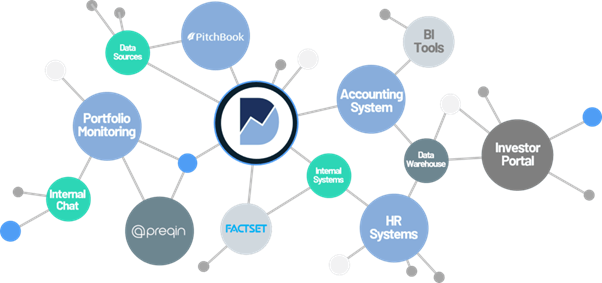Technology transformation within capital markets firms is a proven strategy for helping financial services professionals better address their LP and client expectations. In a recent webinar that Intapp co-hosted with LionPoint, we shared insights from our global client base and how they managed technology transformation. To understand the process of technology transformation, we must be aware of the current market trends that are the driving force behind the changes being made by financial firms.
Trends affecting technology transformation at capital markets firms
The first trend is a growing reliance on relationships. Relationships have always been a differentiator when it comes to having the edge over your competition. Believing you have a strong relationship versus using data to prove its depth is what sets you apart. Successful firms are using technology to bring all their abilities to clients and not leaving anything to chance. Recently, there’s been an industry-wide acknowledgement that key relationships are extremely complex and Excel can’t manage the many touch points. Therefore, the need for a “clear view” on the firm’s relationships is driving technology transformation plans.
Increasing competition and dry powder is also pushing the industry to look more closely at technology solutions. This trend has persisted for a while and what it translates into is more competition to get the right deals.
Lastly, closing deals has become harder because of a fragmented market and countless hurdles that pop up each day. So, the deal management component of the business has never been tougher. With management teams getting more savvy and LPs asking for details more frequently, your firm needs to leverage technology. Excel and outdated tools can’t get the job done anymore.
Now that we’ve established the trends forcing the shift towards firm-wide technology transformation, let’s talk through the three-step process that enables technology transformation at financial services firms.
1. Establish a foundation
When you look at the roadmap and all the things going on at your organization, several initiatives will inevitably rise to the top. It’s also going to become apparent that there are building blocks that everyone will be attached to.
CRM is right at the heart of this first step because it touches every single one of these mission critical functions. It’s important that the technology selected has an open architecture that allows for integration and automation. It’s also critical to establish a comprehensive data management plan and create processes for system usage.
2. Optimize the architecture
When the right foundation is in place, there can be a clear path to connecting technologies together. In the capital markets industry, professionals often refer to this as “making systems communicate” or “connecting the dots of the technology ecosystem.”
Whether your firm aims to implement automated processes to reduce operational risks or seeks to efficiently scale through connected technology, it’s crucial to think about long-term architectural requirements. When firms get to this phase, they seek to leverage reporting and data analytics across technology platforms. With a strong foundation, a well-planned data management strategy, and clear processes will consistently succeed.

3. Address functional gaps
Naturally, even the most advanced and well-intentioned technology plan may have some gaps. Although the current technology framework may be robust for your team, it’s likely that as the firm grows and evolves, the needs and demands for the existing technology platforms will also change.
That’s why it’s important to always have an open mind as to how the technology can grow alongside your firm. Before selecting the technology, it’s important that you assess the platform’s ability to grow and change over time. Platforms like Intapp DealCloud are purpose-built to meet the needs of ever-changing capital markets firms, enabling teams to constantly evolve and improve their systems and processes.
Conclusion
10 years ago, having a truly foundational technology platform for your capital markets firm was a bit aspirational. It used to seem impossible for a firm to have all analytics, reports, and data all in one centralized place. Today, firms are achieving these goals with a well-established method.
To read more about our technology blueprints for capital markets firms, click here. To learn more about the technology transformation projects we’ve completed for our existing client base, click here.
